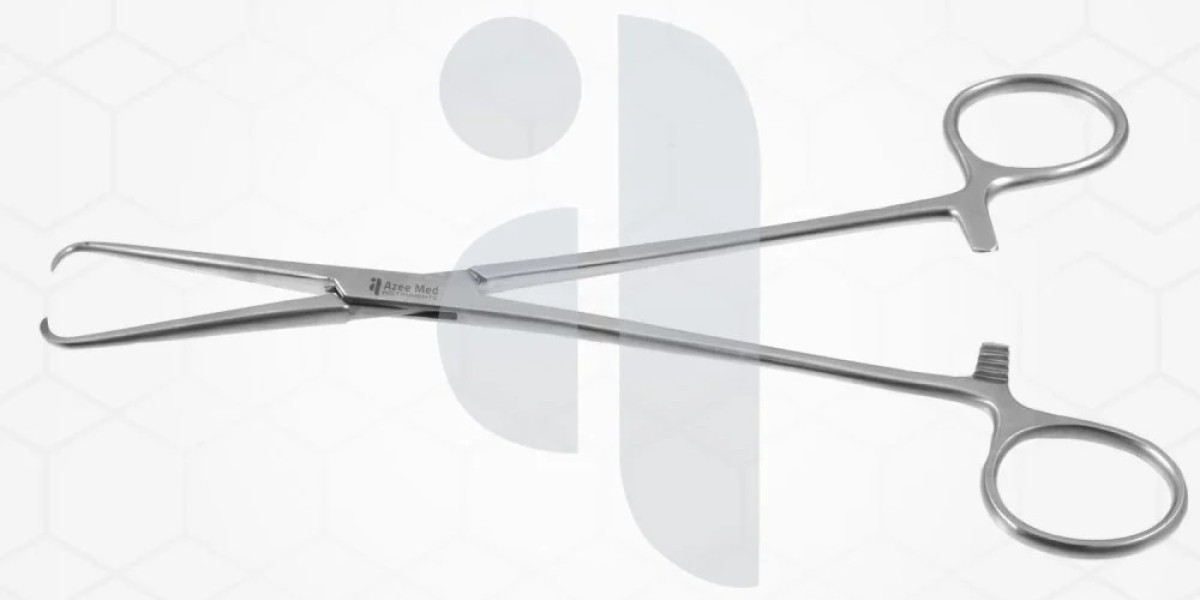Surgical procedures are complex processes where precision, expertise, and the right tools come together to deliver successful outcomes. Among the extensive range of surgical instruments, forceps surgery play an essential role in ensuring the smooth execution of various surgeries, from minor procedures to major operations.
What Are Surgical Forceps?
Surgical forceps are handheld instruments used by medical professionals to grasp, manipulate, or hold tissue and materials during surgery. Their versatility and ergonomic designs make them suitable for an array of tasks, ranging from holding open incisions to clamping vital blood vessels. These tools are typically made of stainless steel to ensure durability, sterilizability, and resistance to corrosion.
The designs of forceps vary depending on their intended use. While some are simple and straight, others come with curved tips or finely serrated edges for added grip and precision. Each design addresses specific surgical needs, showcasing the diversity and importance of these instruments in operating rooms.
Types of Surgical Forceps
Surgical forceps are categorized into several types based on their function, such as grasping, clamping, or retracting. Below, we touch on a few common types that are integral to surgeries worldwide.
Thumb Forceps
Thumb forceps look similar to tweezers and are commonly used for holding tissue, dressing wounds, or removing items lodged in the body. They are operated manually and offer precision when working with delicate materials or tissues.
Hemostatic Forceps
Also known as clamps, hemostatic forceps are designed to control bleeding during surgery. These forceps have locking mechanisms that allow surgeons to clamp blood vessels securely, reducing the risk of blood loss and maintaining visibility in the surgical field.
Tissue Forceps
Tissue forceps are crucial for gripping and manipulating tissues without causing unnecessary harm. Their serrated tips ensure that delicate organ structures can be held firmly without slipping.
Specialty Forceps
Certain forceps, such as sponge holding forceps are tailored for specific purposes. These instruments are designed to securely hold sponges for tasks like dabbing away fluids or disinfecting surgical fields. Their unique design ensures both precision and hygiene.
The Role of Forceps in Surgery
Forceps are more than just instruments; they serve as extensions of the surgeon's hands, enabling tasks that human fingers alone cannot perform. Whether it’s isolating a single blood vessel or manipulating fragile tissue, these devices ensure accuracy and efficiency in critical situations. They are particularly valuable in laparoscopic procedures, where tools must operate through small incisions to minimize patient recovery time.
Every type of forceps is a product of careful design and engineering, which ensures they meet strict medical standards. For instance, sponge holding forceps, widely used in gynecological and general surgeries, boast long shafts and looped tips specifically designed to handle surgical sponges safely. By integrating ergonomic features, they allow surgeons to maintain control during extended operations.
Importance of Proper Handling and Maintenance
To maintain the utmost performance and patient safety, proper handling, cleaning, and sterilization of surgical forceps are crucial. Instruments that are poorly maintained can compromise surgery by introducing contamination or breaking at critical moments. Ensuring consistent sterilization workflows and regularly inspecting tools for wear-and-tear are key factors in the longevity and reliability of surgical instruments.
Medical staff must be trained not only in the usage of various forceps but also in their care. From ultrasonic cleaning to autoclaving, every step ensures these vital instruments remain safe to use.
The Future of Surgical Instruments
Technological advances are shaping the future of surgical instruments, with forceps being no exception. From the development of materials with enhanced durability to the creation of single-use instruments for improved hygiene, surgeons now have access to an impressive range of tools designed with innovation and patient safety in mind. Robotic surgery systems even integrate forceps that can mimic the precision of a surgeon's hand while minimizing potential tissue damage.
This evolution ensures that surgical instruments will continue to improve, helping healthcare providers enhance their techniques and outcomes.
Final Thoughts
Forceps are an indispensable part of surgical procedures, bridging the gap between human capability and mechanical efficiency. Their wide variety of styles and designs allows for unmatched adaptability, making them suitable for treating everything from minor injuries to complex conditions.
By combining proper handling, continual innovation, and rigorous sterilization practices, these instruments demonstrate their remarkable ability to evolve in response to surgical needs. Whether it’s the reliable utility of sponge holding forceps or the precision of tissue-clamping tools, the role of forceps in modern medicine cannot be overstated.






